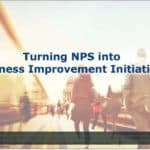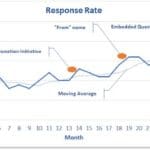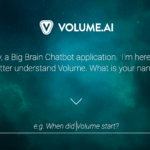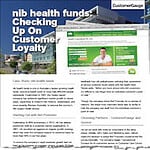Recent analysis of Net Promoter Score® data from one of our clients indicates that NPS is almost three times more sensitive at predicting customer churn than customer satisfaction. In addition, Detractors are 1.5 times more likely to terminate than Promoters.
nib health funds is one of Australia’s leading and fastest growing health funds. As an organisation, nib has embraced the Net Promoter Score process. They have integrated transactional measurement of NPS into the Customer Care Centre and other key customer touch points using the CustomerGauge NPS data collection and reporting system (full disclosure: we sell the CustomerGauge system in Asia).
As a company, nib uses daily feedback from its NPS survey to coach Customer Care Centre consultants, perform service recovery and drive improvement in products. In short, nib is working hard to listen to its customers and deliver the best possible service.
During this process we wanted to look more closely at nib’s data and see exactly how NPS linked to business outcomes for the health fund. A couple of months ago nib generously agreed to provide us with some de-identified data that included customer response scores and termination information. This gave us a great opportunity to test the link between NPS and customer retention.
Background
Private health insurance is an interesting industry because you essentially pay upfront for a service that you hope never to use. In Australia we also have a system where health insurance companies are not allowed to “risk rate” their pricing. In simple terms it means companies must provide private health insurance cover and charge the same premium irrespective of your age and sex. All this means that the most important customer facing driver of business success in health insurance is customer retention. While the idea of upselling to a higher level of cover does exist, keeping customers longer is key.
Results
With data from 20,000 Transactional NPS surveys and 12 months of termination history for those accounts we had a great set of information with which to work.
Also, the nib survey is a little different to the standard Transactional Survey in that it includes a “Customer Satisfaction” question as well as the “Would recommend” question. This made it possible to for us to look at the effectiveness of each question.
In summary we found that:
- A one point increase in “Would Recommend” score results in a decreased of risk of termination by 7.8%
- A one point increase in “Customer Satisfaction” score results in a decrease of risk of termination by 2.9%
This means that as a predictor of customer attrition the standard “Would recommend” question is 2.7 times as effective as customer satisfaction.
We also found that:
- The risk of attrition for Detractor respondents is 1.5 times that of Promoter respondents
I don’t really have to spell out why this is important. You can see that Promoters are linked much more strongly to retention success.
To us this was great confirmation that the NPS approach works. For nib it means that they must keep delivering a great service for their customers, secure in the knowledge that NPS is a great way to determine which customers are happy and which are not.
We would like to acknowledge the support of nib and thank the health fund for allowing us to publish these findings.











